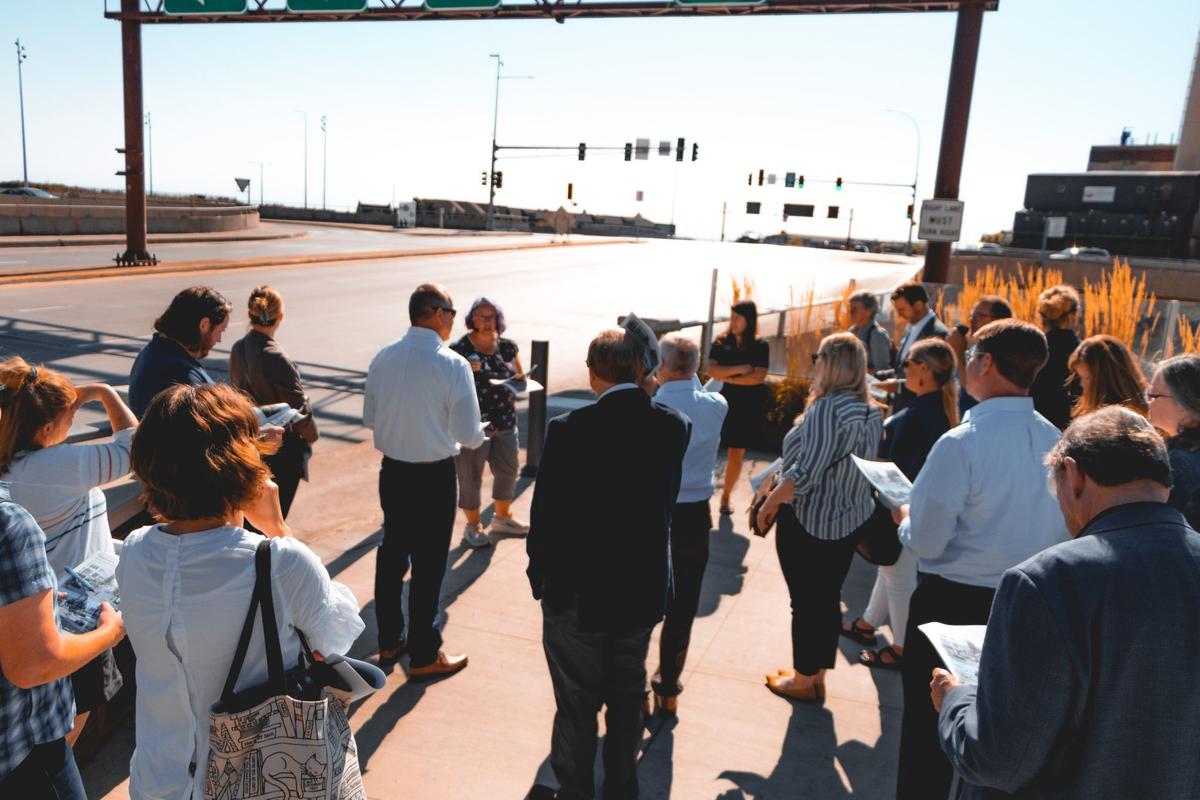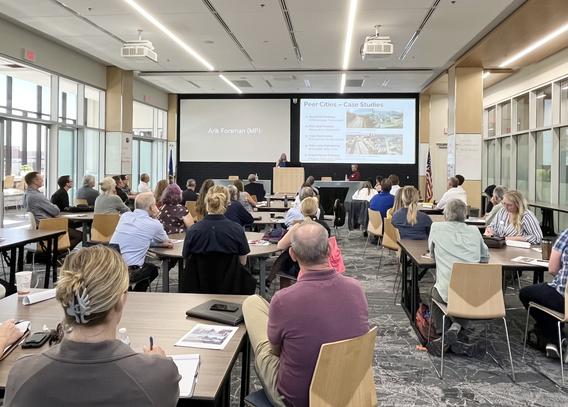When people gather to discuss the future of a community, they quickly come to recognize the breadth of visions that coexist about what that place is today and what it can become. Case in point: The Downtown I-35 Redesign project in Duluth, which is exploring ways to “rightsize”—or even replace—the freeway and better connect downtown to the waterfront.
As part of these discussions, partners from the University of Minnesota convened a range of nearly 60 local, regional, and state stakeholders in late August. In addition to the planning efforts currently underway for the corridor, there is also significant national attention on the role of freeways in urban areas in light of the USDOT’s Reconnecting Communities Program.
The day’s convening at Minnesota Power was heavily focused on a roughly one-mile section of the freeway and adjacent land uses—the central business district of Duluth and Canal Park, a major tourist and recreational area along Lake Superior. I-35 also connects Duluth to the Twin Cities and beyond, services the vital port of Duluth–Superior, and serves as a central artery for local and recreational travel to Minnesota’s popular North Shore.
The day began with a welcome by Duluth City Councilor Arik Forsman and CTS director Kyle Shelton. Next, James Gittenmeier and Jenn Reed Moses of the city’s Planning and Development Division led a guided walking tour. Two groups crossed over I-35 and a parallel railway on a bridge and returned via the climate-controlled Skywalk connection over the freeway near the Duluth Entertainment Convention Center. These primary pedestrian accesses between downtown and Canal Park typify the challenges for those seeking to move freely between these two prominent destinations without an automobile. The tour also highlighted the limited access points from the freeway to local roads serving these destinations. During events and tourist season, these roads become heavily congested as choke points.
The tour was followed by a presentation by Monica Haynes, director of the Bureau of Business Economic Research (BBER) at University of Minnesota Duluth, and John Bennett, educator at the U of M Extension Department of Community Development. In addition to providing qualitative and quantitative data related to the condition, usage, and perceptions of I-35 in the downtown, Haynes and Bennett shared how they responded to an initial idea from a community group to inform outreach at local events. This work engaged individuals, families, visitors, and stakeholders about the project and provided a catalyst for future engagement plans.
Read the BBER report: The Economic Effects of the Potential I-35 Conversion in Downtown Duluth
Frank Douma, director of state & local policy and outreach at the Institute for Urban and Regional Infrastructure Finance in the Humphrey School of Public Affairs, presented his team’s research (sponsored by MnDOT) on how other communities across the U.S. have approached issues related to right-of-way and its uses. His presentation provided lessons learned for these early-stage discussions and project ideation.
Keynote speaker Tracy Hadden Loh, fellow with the Anne T. and Robert M. Bass Center for Transformative Placemaking at Brookings Metro, discussed how demographics and revolutions in technology, commerce, and the economy are changing our relationships to built environments. Hadden Loh closed with a call to action and encouraged participants to celebrate the opportunity Duluth has to work together to build on its physical, economic, and community assets to imagine a thriving future.
Attendees expressed a range of visions for what Duluth is as a city and what it should become. Often, aspects of the visions overlapped, but they also came in at odds. “The event made it clear that there are many more questions to ask beyond what to do with the freeway and waterfront connection,” Shelton says. “Invested actors need to be willing to meet each other where they are and jointly explore what is feasible and how to get there.”
The University partners—BBER, CTS, and Extension Community Development—convened the day to bring the U’s expertise to bear in these discussions. “Universities and the research they produce can often help reframe ongoing discussion and insert new ideas,” Shelton says. “And, while it's critical to acknowledge that universities themselves are a part of the community and have their own vested interests in the future of that place, they also often take on an effective role as a neutral convener, usually removed from direct decision making. In this case, CTS plays no role in Duluth’s decision making and naturally carries a neutral mantle. This allows for prompting a different series of questions and facilitating new paths to answers.”

